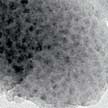Showing Spotlights 233 - 240 of 240 in category All (newest first):
 Researchers took inspiration from the packaging and transduction processes of the cochlea and cilia in the inner ear to design acoustic sensors made from nanowires. Specifically, they used nanowires of magnetostrictive materials as artificial cilia to sense acoustic signals. Any acoustic sensor application may benefit from this work.
Researchers took inspiration from the packaging and transduction processes of the cochlea and cilia in the inner ear to design acoustic sensors made from nanowires. Specifically, they used nanowires of magnetostrictive materials as artificial cilia to sense acoustic signals. Any acoustic sensor application may benefit from this work.
Jun 13th, 2006
 The sensitivity of solid-state gas sensors can be improved if the surface-to-volume ratio of the material used for the sensor is increased. An international group of researchers demonstrated that three-dimensional tungsten oxide nanowire networks can serve as a high-surface area material for building ultrasensitive and highly selective gas sensors. The results highlight that the 3-D nanowires technology can be adopted for the development of gas sensors with performances suitable for practical applications.
The sensitivity of solid-state gas sensors can be improved if the surface-to-volume ratio of the material used for the sensor is increased. An international group of researchers demonstrated that three-dimensional tungsten oxide nanowire networks can serve as a high-surface area material for building ultrasensitive and highly selective gas sensors. The results highlight that the 3-D nanowires technology can be adopted for the development of gas sensors with performances suitable for practical applications.
Jun 8th, 2006
 A new approach promotes the use of zinc oxide nanomaterials as signal enhancing platforms for rapid, multiplexed, high-throughput, highly sensitive, DNA sensor arrays. Engineered nanoscale ZnO structures can be effectively used for the identification of the biothreat agent, Bacillus anthracis, by successfully discriminating its DNA sequence from other genetically related species.
A new approach promotes the use of zinc oxide nanomaterials as signal enhancing platforms for rapid, multiplexed, high-throughput, highly sensitive, DNA sensor arrays. Engineered nanoscale ZnO structures can be effectively used for the identification of the biothreat agent, Bacillus anthracis, by successfully discriminating its DNA sequence from other genetically related species.
Jun 6th, 2006
 Among the many potential biology-related applications proposed for carbon nanotubes (CNTs) are high-sensitivity biosensors and bio-fuel cells. In order to create the synergy between the biomolecules and CNTs required to realize these applications, biomolecules, such as proteins and DNAs, must be connected to the CNTs.
Among the many potential biology-related applications proposed for carbon nanotubes (CNTs) are high-sensitivity biosensors and bio-fuel cells. In order to create the synergy between the biomolecules and CNTs required to realize these applications, biomolecules, such as proteins and DNAs, must be connected to the CNTs.
May 19th, 2006
 Researchers at Cornell University have developed a novel quantitative nanoparticle-based sensor of chemical concentrations based on organic dye molecules covalently integrated into the matrix of silica nanoparticles. This is the first work that implements an optimized core-shell architecture for such sensor particles.
Researchers at Cornell University have developed a novel quantitative nanoparticle-based sensor of chemical concentrations based on organic dye molecules covalently integrated into the matrix of silica nanoparticles. This is the first work that implements an optimized core-shell architecture for such sensor particles.
May 8th, 2006
 Humidity is a measure of the moisture content of an environment. Control of humidity is thus essential for maintaining the desired level of moisture in an enclosure be it in a hospital or in a semiconductor-processing unit or in a laboratory. For humidity control an efficient sensor is an absolute necessity.
Humidity is a measure of the moisture content of an environment. Control of humidity is thus essential for maintaining the desired level of moisture in an enclosure be it in a hospital or in a semiconductor-processing unit or in a laboratory. For humidity control an efficient sensor is an absolute necessity.
May 4th, 2006
 Researchers in Switzerland succeeded in the large-scale production of carbon-coated copper nanoparticles. These carbon/copper nanocomposites could be used as novel, low-cost sensor materials and offer a metal-based alternative to the currently used brittle oxidic spinels or perovskites.
Researchers in Switzerland succeeded in the large-scale production of carbon-coated copper nanoparticles. These carbon/copper nanocomposites could be used as novel, low-cost sensor materials and offer a metal-based alternative to the currently used brittle oxidic spinels or perovskites.
Apr 4th, 2006
 A comprehensive overview of the main concepts behind the development of nanosensors and the most relevant applications in the field of environmental analysis.
A comprehensive overview of the main concepts behind the development of nanosensors and the most relevant applications in the field of environmental analysis.
Mar 22nd, 2006
 Researchers took inspiration from the packaging and transduction processes of the cochlea and cilia in the inner ear to design acoustic sensors made from nanowires. Specifically, they used nanowires of magnetostrictive materials as artificial cilia to sense acoustic signals. Any acoustic sensor application may benefit from this work.
Researchers took inspiration from the packaging and transduction processes of the cochlea and cilia in the inner ear to design acoustic sensors made from nanowires. Specifically, they used nanowires of magnetostrictive materials as artificial cilia to sense acoustic signals. Any acoustic sensor application may benefit from this work.
 Subscribe to our Nanotechnology Spotlight feed
Subscribe to our Nanotechnology Spotlight feed